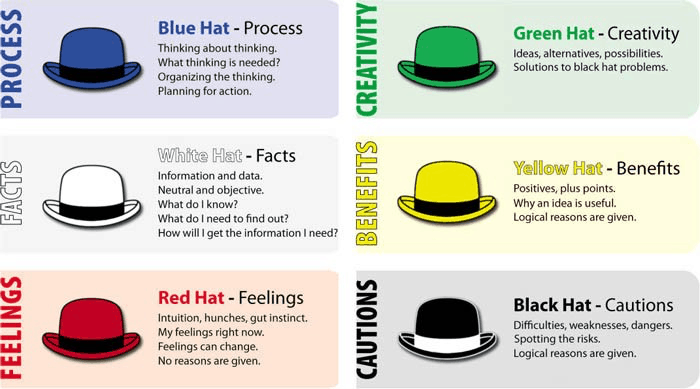Being conventional produces conventional results. If you are following a recipe to cook your dinner, being conventional is a good idea. Do what the recipe says, get the familiar result that your palate expects. But conventionality in the world of growing innovative young companies is a dangerous habit to develop. In fact, following convention may well be a major reason so many young companies fail. After all, the standard “here’s how to start a company, grow it, fund it, then exit” pathway leads to about a 1% success rate. So something’s wrong there. On the other hand, here’s some familiar wisdom that will generate unfamiliar action on your part:
The Road Not Taken
BY ROBERT FROST
Two roads diverged in a yellow wood,And sorry I could not travel bothAnd be one traveler, long I stoodAnd looked down one as far as I couldTo where it bent in the undergrowth;Then took the other, as just as fair,And having perhaps the better claim,Because it was grassy and wanted wear;Though as for that the passing thereHad worn them really about the same,And both that morning equally layIn leaves no step had trodden black.Oh, I kept the first for another day!Yet knowing how way leads on to way,I doubted if I should ever come back.I shall be telling this with a sighSomewhere ages and ages hence:Two roads diverged in a wood, and I—I took the one less traveled by,And that has made all the difference.
I want to give you a key distinction at this point — remember this: I’m not suggesting that the path to success is paved through acting unconventionally just for the sake of being different. Acting unconventionally might be fun, might create a certain anti-establishment or cool-place-to-work vibe, but none of that will in and of itself produces extraordinary results. I’m suggesting that you learn to think unconventionally, then instill that kind of thinking throughout your company.

Here’s why this matters for you: new ways of thinking produce new types of results. Being unconventional truly means “un-conventional” i.e. “not-conventional.” This means solving problems and making decisions based on independent thinking, i.e. thinking through the problem or issue independently of the way it’s done elsewhere, in other words, being innovative in every decision and solution whether large or small throughout all parts of the business. Here are five key ways you can be an innovative, unconventional leader . . .
#1 Practice “First Principles” Thinking
First principles thinking is a process in which you set aside whatever you think you already know about a situation, then create a new approach to the challenge from scratch. To do this, you simply embrace the willingness to let go of all your assumptions about how to meet the challenge — including all that conventional wisdom that may be dancing in your head! From there, you find yourself in what at first may seem like a strange place — a wide open space in which you are unhindered by the bounds of convention. This is what Justice Thomas Clark did in crafting the majority opinion of the Supreme Court in the case I referenced above. That’s how he cleared space to find an elegant, brilliant solution to the vexing problem of state courts refusing to uphold federal law in their jurisdictions. He found another body of law they had no power to ignore.

Great innovators from Da Vinci to Tesla to Richard Feynman have used first principles thinking as well. So does master innovator Elon Musk. Musk describes the process, in an article entitled Elon Musks’ “3-Step” First Principles Thinking: How to Think and Solve Difficult Problems Like a Genius, by Mayo Oshin, as “boil[ing] things down to their fundamental truths and reason up from there, as opposed to reasoning by analogy. Through most of our life, we get through life by reasoning by analogy, which essentially means copying what other people do with slight variations.” Never accept the argument in your own head or from other people saying “that’s the way it’s done” or “these are the best practices.” Remember that “innovation” is not limited to your product. It applies to every decision and problem to be solved.
#2 Employ the “Mission Impossible” Management Style

Recall that Mr. Musk applies the “Mission Impossible” management style, challenging people to achieve extraordinary results, within tight timelines, with a lot of freedom to find a solution through their own innovative approach. See my previous blog on this. Musk carries the “Mission Impossible” management style by practicing “First Principles” thinking, then demanding that everyone else do the same. You can’t practice Mission Impossible management without also practicing First Principles thinking. The two methods work together hand and glove. The results speak for themselves.
#3 Ask for Help to Apply First Principles Thinking
Here’s an innovation in being innovative: Buddy-up with someone else you respect to help think through problems or make tough decisions in this way. This can either be an outside coach, a board of adviser member, or an executive in your company, perhaps someone with the position “Innovation Master.” First, work with your adviser to identify your current assumptions. Next, break down the problem into its fundamental elements. As Elon Musk says, “Make sure you understand the fundamental principles, ie the trunk and big branches, before you get into the leaves/details or there is nothing for them to hang on.” Finally, create new solutions from a blank canvas. A coach, mentor or other advisers can help you identify the limits to your current thinking, as well as your explicit and tacit assumptions. From there, he or she can also help provide a structure for new thinking. This is an innovative way to become more innovative.
#4 Spread “First Principles” Thinking and “Mission Impossible” Management Throughout Your Company
Request that all executives and managers solve problems and make decisions in every part of the business based on “first principles” using the Musk “first principles” system. Request that they also buddy up to ask for help, as you do. If you have an “Innovation Master” then suggest or even require that they consult with him/her on major decisions or problems to be solved. Most importantly, use the “Mission Impossible” management method when giving assignments or setting project goals, without fear of pissing people off. Since the “Mission Impossible” management will, in fact, piss people off, suggest that they apply “first principles” thinking in order to deal with their annoyance or stress, in order to handle the mission-impossible assignment, rather than reacting with passive aggressiveness or any other kind of resistance. You’re going to have to confront a lot of resistance and will lose people along the way. However, this will get you to where you want to go most quickly.
#5 Employ Six Thinking Hats of Edward De Bono
Happily, there is existing technology to support “First Principles” thinking, namely “The Six Thinking Hats of Edward de Bono.” Six Thinking Hats is a decision-making technique for group discussions and individual thinking. This technique does not replace “First Principles” thinking. It’s a means to organize your thinking process to get to a result more quickly. As Mr. de Bono says, “You and your team members can learn how to separate thinking into six clear functions and roles. Each thinking role is identified with a colored symbolic “thinking hat.” By mentally wearing and switching “hats,” you can easily focus or redirect thoughts, the conversation, or the meeting.” Here is a brief overview of each “hat.”

The White Hat calls for information known or needed. “The facts, just the facts.” This maps to First Principles thinking in terms of the need to boil the issue down to its essential characteristics.
The Yellow Hat symbolizes brightness and optimism. Under this hat, you explore the positives and probe for value and benefit. As stated above, this is a great role for an advisor to play, to help structure a positive approach to solving the problem.
The Black Hat is a judgment – the devil’s advocate or why something may not work. Spot the difficulties and dangers; where things might go wrong. Probably the most powerful and useful of the Hats but a problem if overused. Here, do your best to separate a healthy criticism of certain ideas, without falling into conventional thinking! Remember, a new idea is NOT wrong just because conventional wisdom says otherwise.
The Red Hat signifies feelings, hunches, and intuition. When using this hat you can express emotions and feelings and share fears, likes, dislikes, loves, and hates. As I mentioned earlier, if you employ Elon Musk’s Mission Impossible management style, emotions will tend to rise up. Red-Hatting those emotions to get them out to be dealt with constructively is a means of incorporating Mission Impossible management with First Principles thinking.
The Green Hat focuses on creativity; the possibilities, alternatives, and new ideas. It’s an opportunity to express new concepts and new perceptions. This maps to the third stage of implementing First Principles thinking in your organization.
The Blue Hat is used to manage the thinking process. It’s the control mechanism that ensures the Six Thinking Hats® guidelines are observed. Again, this is a great role for an advisor or team leader to play when employing First Principles thinking.
This was a lot to chew on. OK, then start chewing. I’ve challenged you to fulfill your vision, to express your full potential. Do you think you can get there by being nice and conventional? Now, I’m looking for your comments that will help me and others practice “First Principles” un-conventional thinking in our businesses.
Key Takeaways:
- Embrace the conventional if you want a conventional entrepreneurial result – failure.
- The conventional path is like a virus, so your entire team needs to stay off that path
- Embrace the unconventional path by employing First Principles thinking, then train your team to do so
- Employ First Principles thinking in tandem with Mission Impossible management
- Be sure to get help from mentors, coaches, advisors and especially your in-house “Innovation Master”
- For guidance and structure, use the Six Hats approach to problem-solving or decision making
